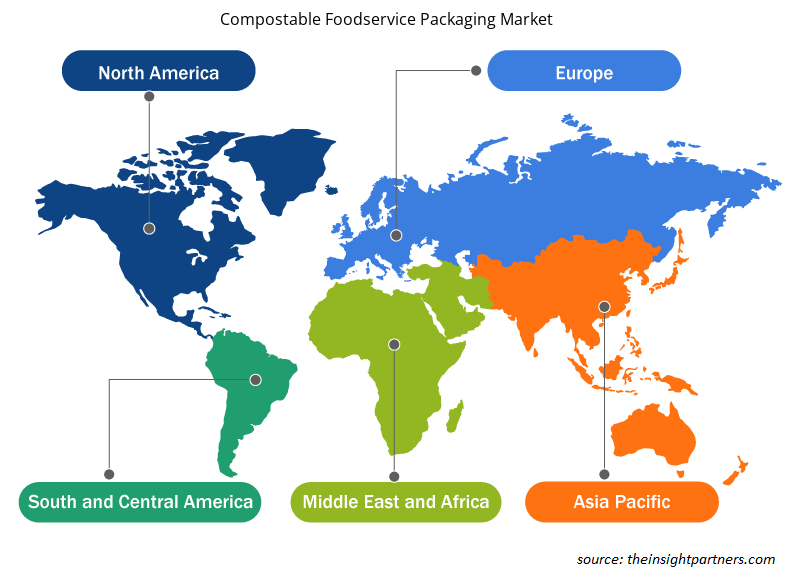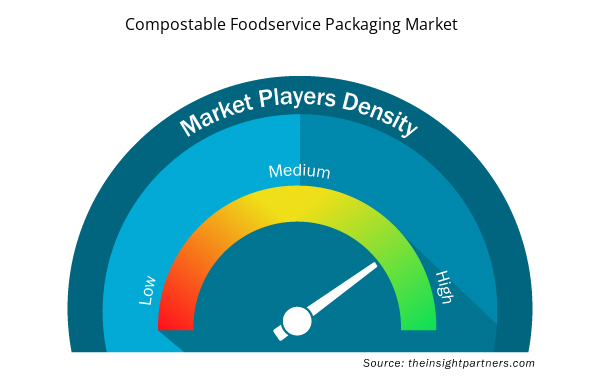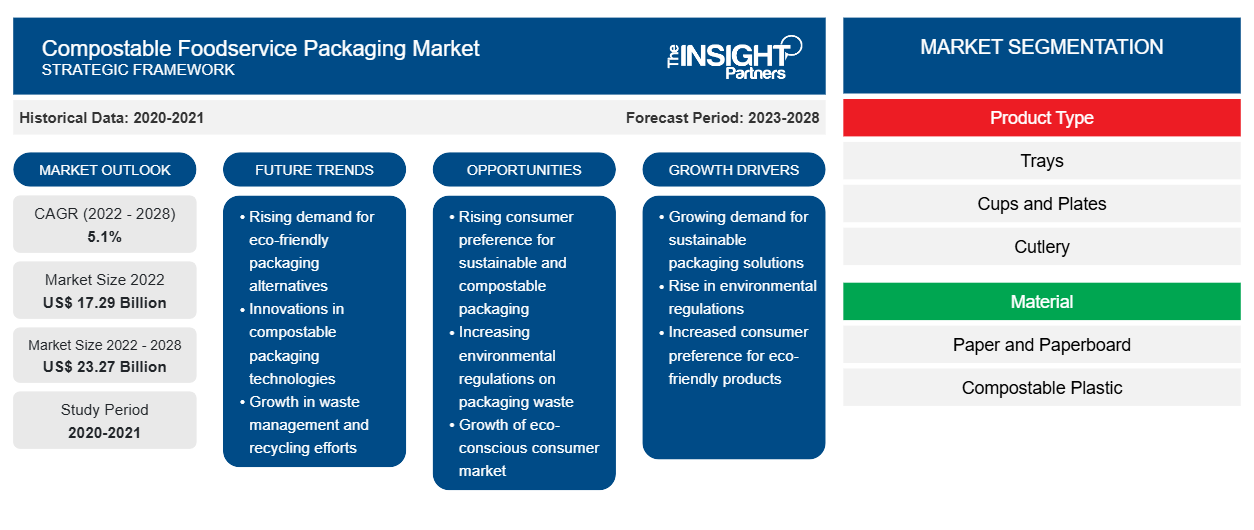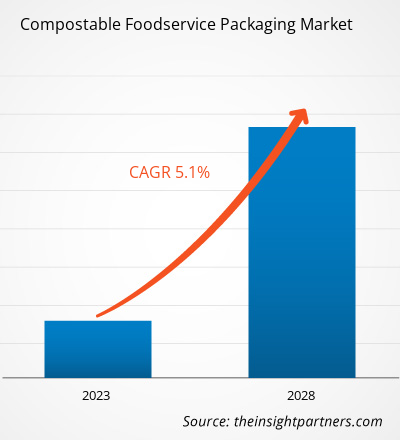可堆肥食品包装市场规模预计将从 2022 年的 172.9124 亿美元增长到 2028 年的 232.7261 亿美元;预计 2022 年至 2028 年的复合年增长率为 5.1%。
包装食品材料可确保物流顺畅。它还提供足够的产品保护,并显著影响消费者的购买行为。因此,包装具有许多不同的功能,并且还可以满足客户各种各样的要求。发达国家收入的近期增长导致生活水平提高,包括包装食品的消费量显着增加。因此,食品安全准则比以往任何时候都更加严格。自从包装首次成为物联网上的“事物”以来,它在客户旅程中的作用已远远超出了货架。这在多个方面产生了变革性影响,包括智能包装,这有助于减少复杂的全球供应链中的食物浪费。技术也在改善包装行业。塑料和造纸化学的进步现在使回收比以往任何时候都更加舒适和方便。因此,包装行业的进步和发展推动了全球可堆肥食品包装市场的增长。
2022 年,亚太地区占据可堆肥食品包装市场的最大份额,预计在预测期内将实现最高的复合年增长率。该地区的公司正在不断增强整体业务流程,以尽可能最好的方式满足客户对高质量产品和服务的需求。由于符合监管要求的认证可堆肥食品用具得到广泛接受,亚太地区继续促进市场增长。亚太地区可堆肥食品包装市场主要受消费者向方便食品和忙碌生活方式的重大转变等因素驱动。此外,对即食食品的偏好日益增加以及消费者对食品包装的需求模式发生变化,推动了该地区对可堆肥食品包装的需求。
定制此报告以满足您的需求
您可以免费定制任何报告,包括本报告的部分内容、国家级分析、Excel 数据包,以及为初创企业和大学提供优惠和折扣
- 获取此报告的关键市场趋势。这个免费样品将包括数据分析,从市场趋势到估计和预测。
COVID-19 疫情对可堆肥食品包装市场的影响
由于 COVID-19 疫情导致的封锁、旅行限制和企业停工对北美、欧洲、亚太地区 (APAC)、南美和中美以及中东和非洲 (MEA) 等多个国家的经济和行业产生了不利影响。这场危机扰乱了全球供应链、制造活动、交付计划以及必需品和非必需品销售。多家公司宣布,2020 年产品交付可能会延迟,其产品未来销量可能会下滑。此外,欧洲、亚太地区和北美各国政府实施的国际旅行禁令迫使多家公司终止合作和伙伴关系计划。所有这些因素都阻碍了 2020 年和 2021 年初的包装行业,从而抑制了与该包装行业相关的各个市场(包括可堆肥食品包装市场)的增长。
在 COVID-19 疫情爆发之前,可堆肥食品包装市场主要受酒店业需求增长的推动。然而,在 2020 年,由于国家和国际边界关闭导致价值链中断,各行业不得不放慢运营速度。由于各国政府当局实施的限制,COVID-19 疫情扰乱了关键原材料的供应链,并扰乱了制造流程。这些因素减少了可持续包装产品的生产,包括可堆肥包装。
市场洞察
主要参与者的战略发展有利于可堆肥食品包装市场的增长
主要市场参与者正在采用各种营销策略,例如产品发布、并购和合作。市场主要参与者的此类战略发展预计将推动可堆肥食品包装市场的增长。
产品类型洞察
根据产品类型,可堆肥食品包装市场细分为托盘、杯子和盘子、餐具、翻盖包装、碗、小袋和小袋等。杯子和盘子部分在 2022 年占据了最大的市场份额,碗部分预计在预测期内将实现最高的复合年增长率。碗作为可堆肥食品包装市场的一种方便且经济高效的可生物降解包装解决方案而广受欢迎。除了低成本和食品卫生等功能属性外,碗的易堆叠性和随手可取的特点也促使其在全球范围内的需求不断增加。
Genpak, LLC;Good Start Packaging;Dart Container Corporation、Graphic Packaging International, LLC;WestRock Company;Be Green Packaging;Pactiv LLC;Anchor Packaging;Biogas Americas Inc.;和 ECO PRODUCTS INC. 是可堆肥食品包装市场的主要参与者。这些公司主要专注于产品创新,以扩大其市场规模并顺应新兴市场趋势。
可堆肥食品包装市场区域洞察
Insight Partners 的分析师已详尽解释了预测期内影响可堆肥食品包装市场的区域趋势和因素。本节还讨论了北美、欧洲、亚太地区、中东和非洲以及南美和中美洲的可堆肥食品包装市场细分和地理位置。

- 获取可堆肥食品包装市场的区域特定数据
可堆肥食品包装市场报告范围
| 报告属性 | 细节 |
|---|---|
| 2022 年市场规模 | 172.9亿美元 |
| 2028 年市场规模 | 232.7亿美元 |
| 全球复合年增长率(2022 - 2028) | 5.1% |
| 史料 | 2020-2021 |
| 预测期 | 2023-2028 |
| 涵盖的领域 | 按产品类型
|
| 覆盖地区和国家 | 北美
|
| 市场领导者和主要公司简介 |
|
可堆肥食品包装市场参与者密度:了解其对业务动态的影响
可堆肥食品包装市场正在快速增长,这得益于终端用户需求的不断增长,这些需求源于消费者偏好的不断变化、技术进步以及对产品优势的认识不断提高等因素。随着需求的增加,企业正在扩大其产品范围,进行创新以满足消费者的需求,并利用新兴趋势,从而进一步推动市场增长。
市场参与者密度是指在特定市场或行业内运营的企业或公司的分布情况。它表明在给定市场空间中,相对于其规模或总市场价值,有多少竞争对手(市场参与者)存在。
在可堆肥食品包装市场运营的主要公司有:
- 杰帕克有限责任公司
- 良好的开端包装
- Dart 集装箱公司
- 图形包装国际有限责任公司
- WestRock 公司
免责声明:上面列出的公司没有按照任何特定顺序排列。

- 获取可堆肥食品服务包装市场顶级关键参与者概览
报告亮点
- 可堆肥食品包装市场的进步行业趋势有助于企业制定有效的长期战略
- 发达国家和发展中国家的可堆肥食品包装市场参与者采用的业务增长战略
- 2020 年至 2028 年市场定量分析
- 可堆肥食品包装的全球需求估计
- 波特五力分析说明了可堆肥食品包装市场中买家和供应商的效力
- 了解竞争市场状况的最新发展
- 市场趋势和前景,以及推动和抑制可堆肥食品包装市场增长的因素
- 通过强调支撑商业利益的市场策略来协助决策过程
- 可堆肥食品包装市场在不同节点的规模
- 可堆肥食品包装行业的市场和增长动态的详细概述和细分
- 各地区可堆肥食品包装市场规模及增长机遇
- 历史分析(2 年)、基准年、预测(7 年)及复合年增长率
- PEST 和 SWOT 分析
- 市场规模价值/数量 - 全球、区域、国家
- 行业和竞争格局
- Excel 数据集



Report Coverage
Revenue forecast, Company Analysis, Industry landscape, Growth factors, and Trends

Segment Covered
This text is related
to segments covered.

Regional Scope
North America, Europe, Asia Pacific, Middle East & Africa, South & Central America

Country Scope
This text is related
to country scope.
常见问题
Based on material, compostable plastic (bio-plastic) is the fastest-growing segment. Compostable or biodegradable bioplastics, most commonly used for utensils, are marketed as a sustainable alternative to single-use plastic. Therefore, a large number of retailers and foodservice industries are focusing on the environmentally compatible packaging, which in turn is driving the segment’s growth.
Asia Pacific compostable foodservice packaging market is expected to surge due to the rising consumer preference for ready-to-eat food and takeaway. This can be attributed to changing lifestyles, increasing disposable incomes, and rapid urbanization, mainly in emerging economies. Therefore, Asia Pacific accounts for the largest share of the global compostable foodservice packaging market.
Cups and plates are leak-proof disposables and eco-friendly, which are made out of recycled paper. The rising demand for eco-friendly, sustainable, and safe cutlery, owing to increasing restaurants, fast food joints, and cafeterias, drives the need for compostable plates and cups.
Some of the major players operating in the global compostable foodservice packaging market are Genpak, LLC; Dart Container Corporation; Graphic Packaging International, LLC; WestRock Company; Be Green Packaging; amongst others.
The focus on sustainable packaging as well as rising number of foodservice establishments offering delivery and catering options, is expected to create lucrative opportunities to the global compostable foodservice packaging market during the forecast period.
Trends and growth analysis reports related to Chemicals and Materials : READ MORE..
The List of Companies - Compostable Foodservice Packaging Market
- Genpak LLC
- Good Start Packaging
- Dart Container Corporation
- Graphic Packaging International LLC
- WestRock Company
- Be Green Packaging
- Pactiv LLC
- Anchor Packaging
- Biobag Americas Inc
- ECO PRODUCTS INC
The Insight Partners performs research in 4 major stages: Data Collection & Secondary Research, Primary Research, Data Analysis and Data Triangulation & Final Review.
- Data Collection and Secondary Research:
As a market research and consulting firm operating from a decade, we have published and advised several client across the globe. First step for any study will start with an assessment of currently available data and insights from existing reports. Further, historical and current market information is collected from Investor Presentations, Annual Reports, SEC Filings, etc., and other information related to company’s performance and market positioning are gathered from Paid Databases (Factiva, Hoovers, and Reuters) and various other publications available in public domain.
Several associations trade associates, technical forums, institutes, societies and organization are accessed to gain technical as well as market related insights through their publications such as research papers, blogs and press releases related to the studies are referred to get cues about the market. Further, white papers, journals, magazines, and other news articles published in last 3 years are scrutinized and analyzed to understand the current market trends.
- Primary Research:
The primarily interview analysis comprise of data obtained from industry participants interview and answers to survey questions gathered by in-house primary team.
For primary research, interviews are conducted with industry experts/CEOs/Marketing Managers/VPs/Subject Matter Experts from both demand and supply side to get a 360-degree view of the market. The primary team conducts several interviews based on the complexity of the markets to understand the various market trends and dynamics which makes research more credible and precise.
A typical research interview fulfils the following functions:
- Provides first-hand information on the market size, market trends, growth trends, competitive landscape, and outlook
- Validates and strengthens in-house secondary research findings
- Develops the analysis team’s expertise and market understanding
Primary research involves email interactions and telephone interviews for each market, category, segment, and sub-segment across geographies. The participants who typically take part in such a process include, but are not limited to:
- Industry participants: VPs, business development managers, market intelligence managers and national sales managers
- Outside experts: Valuation experts, research analysts and key opinion leaders specializing in the electronics and semiconductor industry.
Below is the breakup of our primary respondents by company, designation, and region:

Once we receive the confirmation from primary research sources or primary respondents, we finalize the base year market estimation and forecast the data as per the macroeconomic and microeconomic factors assessed during data collection.
- Data Analysis:
Once data is validated through both secondary as well as primary respondents, we finalize the market estimations by hypothesis formulation and factor analysis at regional and country level.
- Macro-Economic Factor Analysis:
We analyse macroeconomic indicators such the gross domestic product (GDP), increase in the demand for goods and services across industries, technological advancement, regional economic growth, governmental policies, the influence of COVID-19, PEST analysis, and other aspects. This analysis aids in setting benchmarks for various nations/regions and approximating market splits. Additionally, the general trend of the aforementioned components aid in determining the market's development possibilities.
- Country Level Data:
Various factors that are especially aligned to the country are taken into account to determine the market size for a certain area and country, including the presence of vendors, such as headquarters and offices, the country's GDP, demand patterns, and industry growth. To comprehend the market dynamics for the nation, a number of growth variables, inhibitors, application areas, and current market trends are researched. The aforementioned elements aid in determining the country's overall market's growth potential.
- Company Profile:
The “Table of Contents” is formulated by listing and analyzing more than 25 - 30 companies operating in the market ecosystem across geographies. However, we profile only 10 companies as a standard practice in our syndicate reports. These 10 companies comprise leading, emerging, and regional players. Nonetheless, our analysis is not restricted to the 10 listed companies, we also analyze other companies present in the market to develop a holistic view and understand the prevailing trends. The “Company Profiles” section in the report covers key facts, business description, products & services, financial information, SWOT analysis, and key developments. The financial information presented is extracted from the annual reports and official documents of the publicly listed companies. Upon collecting the information for the sections of respective companies, we verify them via various primary sources and then compile the data in respective company profiles. The company level information helps us in deriving the base number as well as in forecasting the market size.
- Developing Base Number:
Aggregation of sales statistics (2020-2022) and macro-economic factor, and other secondary and primary research insights are utilized to arrive at base number and related market shares for 2022. The data gaps are identified in this step and relevant market data is analyzed, collected from paid primary interviews or databases. On finalizing the base year market size, forecasts are developed on the basis of macro-economic, industry and market growth factors and company level analysis.
- Data Triangulation and Final Review:
The market findings and base year market size calculations are validated from supply as well as demand side. Demand side validations are based on macro-economic factor analysis and benchmarks for respective regions and countries. In case of supply side validations, revenues of major companies are estimated (in case not available) based on industry benchmark, approximate number of employees, product portfolio, and primary interviews revenues are gathered. Further revenue from target product/service segment is assessed to avoid overshooting of market statistics. In case of heavy deviations between supply and demand side values, all thes steps are repeated to achieve synchronization.
We follow an iterative model, wherein we share our research findings with Subject Matter Experts (SME’s) and Key Opinion Leaders (KOLs) until consensus view of the market is not formulated – this model negates any drastic deviation in the opinions of experts. Only validated and universally acceptable research findings are quoted in our reports.
We have important check points that we use to validate our research findings – which we call – data triangulation, where we validate the information, we generate from secondary sources with primary interviews and then we re-validate with our internal data bases and Subject matter experts. This comprehensive model enables us to deliver high quality, reliable data in shortest possible time.


 获取此报告的免费样本
获取此报告的免费样本